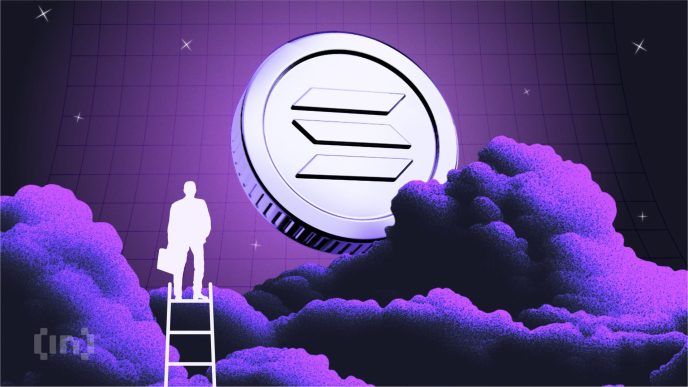HodlX Guest Post Submit Your Post
Cryptocurrency staking is a popular way to increase digital assets. It is similar to depositing money in a bank, which uses customer deposits to form loans for others and incentivizes them with interest payments.
More specifically, crypto staking is the transfer of a part of coins to the blockchain to keep the network functioning and secure.
For this contribution, coin owners are rewarded in the form of a percentage of the deposited funds. The process is a way to make passive income, so it’s quite convenient.
Staking has not always been talked about and used as much as it is now. To understand how this phenomenon became so popular, it is worth studying its history.
Why did staking appear
For a more complete understanding of the topic, it is necessary to consider such concepts as PoW (proof-of-work) and PoS (proof-of-stake) mechanisms, as they had a direct impact on the staking emergence.
Looking ahead, staking appeared as a result of PoW problems.
Challenges of the PoW mechanism
PoW involves verifying transactions and creating new blocks in the blockchain. The verifiers here are called ‘miners,’ who compete to solve math tasks whoever solves it first adds the next block and gets rewarded.
This concept worked fine until the popularity of cryptocurrencies started to grow intensively, and the networks became overloaded.
PoW could no longer process a large number of TPS (transactions per second), which began to limit network bandwidth.
Moreover, this mechanism is very energy-intensive and requires a lot of computational power. It became especially noticeable in the context of increasing network activity and only reinforced the need for change.
Introduction of the PoS mechanism
The answer to the problems of the PoW mechanism was a new one, which was PoS. Its idea was proposed in 2011 on the BitcoinTalk forum by a user of the QuantumMechanic nickname.
He said that the PoS mechanism would select network validators to add new blocks to the blockchain based on the number of coins they have and are willing to stake as collateral.
Such a measure was supposed to reduce the speed of transaction processing, since validators would not have to spend time on tasks.
For the same reason, there was no need for powerful computing equipment, which would decrease energy consumption.
This scheme worked already in 2012, the PoS mechanism was first introduced by the Peercoin cryptocurrency.
Stages of the staking evolution
The idea of the PoS mechanism seemed very attractive to the crypto community.
Therefore, from the beginning of its emergence until today, staking has been actively developing, passing through several stages.
Stage one ntroduction of PoS systems 2014-2017
A large number of crypto projects started applying PoS or hybrid PoW-PoS mechanisms. Blackcoin and Nxt were the first to do it.
During this period, staking was seen as more energy efficient than mining and also safer in terms of environmental impact.
Stage two
The BitShares blockchain platform proposed the concept of DPoS elegated proof-of-stake), where token holders could vote for a limited number of validators to secure the network.
By having a small group of validators, the efficiency of the network increased, and the distribution of staking became more scalable.
Stage three 2018
Some crypto platforms offered SaaS taking as a service), where users could place their assets without running a verification node themselves. This simplification expanded the user base.
Stage four Ethereum upgrade 2020
In 2020, the Ethereum blockchain began the transition to Ethereum 2.0, powered by the PoS mechanism.
It was an important event in the history of staking, as Ethereum is one of the largest blockchain networks. As a result, this period began to see strong growth in staking, creating what is known as the ‘staking boom.’
Stage five nnovation
Staking continues to evolve due to the rise of available cryptocurrencies and liquidity protocols.
For example, the APR for staking TRX on KuCoin starts at two-point-two percent, on Binance it reaches five percent and on Cryptomus it is the full 20%.
Each platform provides its own conditions, so users have the opportunity to choose the most optimal for themselves.
The first crypto platforms that began to provide staking
It is possible to engage in staking on crypto exchanges, among which you can choose the most suitable for yourself. And who was the first to start providing the opportunity of staking? These five.
- Binance The exchange implemented the staking function in its interface in September 2019. Initially, it only supported coins such as NEO, VET and ONT, but over time it expanded this list.
- Kraken A little later, Kraken launched staking (December 2019). The platform’s service allowed users to stake coins without having to run the node themselves.
- OKEx Around the same period, in late 2019, the OKEx platform offered multiple token staking. It sought to simplify the process by providing rewards directly through the platform.
- KuCoin Also in 2019, KuCoin introduced staking through its dedicated Pool-X platform, which provided users with locked and flexible stake amounts. It introduced a liquidity distribution system where users could save liquidity by placing derivatives.
- Coinbase Coinbase crypto exchange caught up with other platforms in 2020, starting with Tezos (XTZ) offering. It allowed users to store their assets in the platform’s wallets while participating in staking.
These cryptocurrency exchanges which were the first to introduce staking into their functionality have been essential in making the process accessible to all users.
It is because they have actively worked to simplify the process of earning rewards that would not require specialized technical knowledge from the staker.
Conclusion
Such an innovative development as simplifying staking and working within the same platform has also influenced the future of the phenomenon because today the number of stakers amounts to millions of users.
And every aspiring crypto investor has at least heard of this concept and may already be looking to multiply digital assets using this tool.
As blockchain technology has evolved, staking has also become an important part of DeFi protocols, where it protects networks and develops new projects.
Most importantly, staking is a guarantee of network sustainability and security, so it is being chosen to work more and more every day.
Marta Abzal is a crypto investor and has been in the cryptocurrency industry for 10 years. She has seen the emergence of Ethereum, USDT, TRX and many other coins on the market particularly ones possible to stake.
Follow Us on Twitter Facebook Telegram
Disclaimer: Opinions expressed at The Daily Hodl are not investment advice. Investors should do their due diligence before making any high-risk investments in Bitcoin, cryptocurrency or digital assets. Please be advised that your transfers and trades are at your own risk, and any loses you may incur are your responsibility. The Daily Hodl does not recommend the buying or selling of any cryptocurrencies or digital assets, nor is The Daily Hodl an investment advisor. Please note that The Daily Hodl participates in affiliate marketing.
Source link
Marta Abzal
https://dailyhodl.com/2024/09/18/exploring-the-history-of-staking/
2024-09-19 03:40:08













